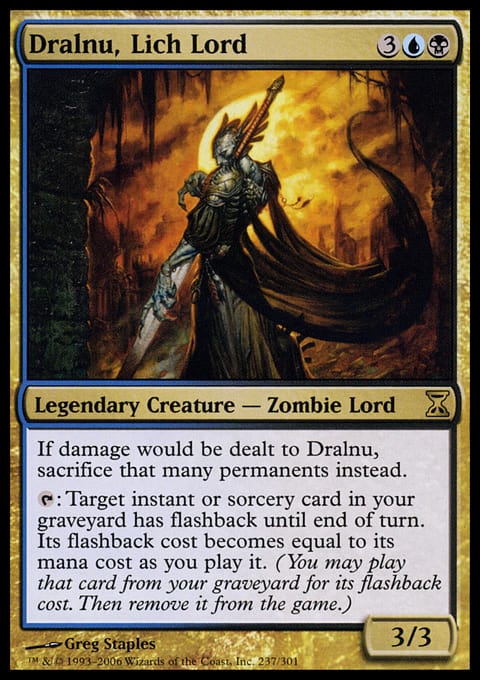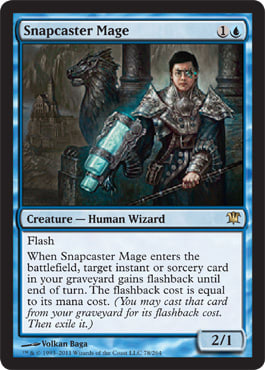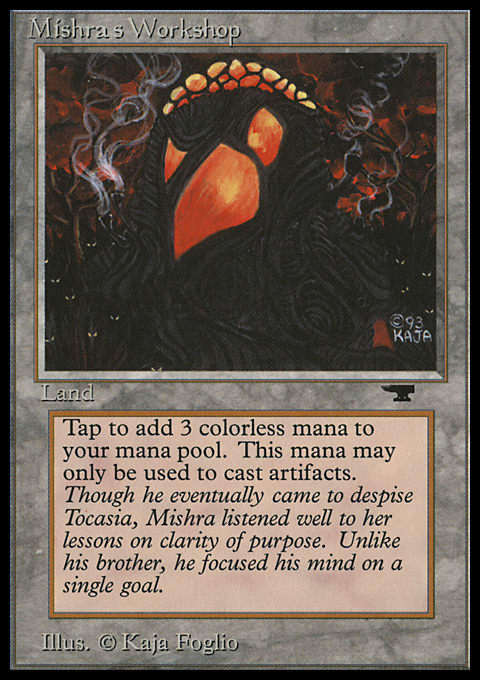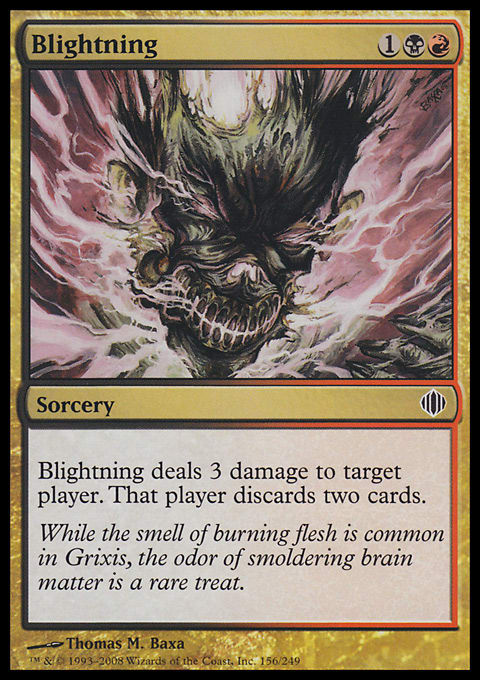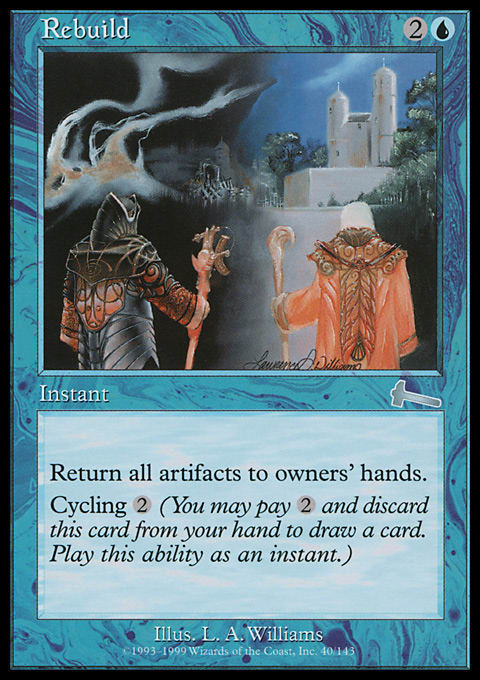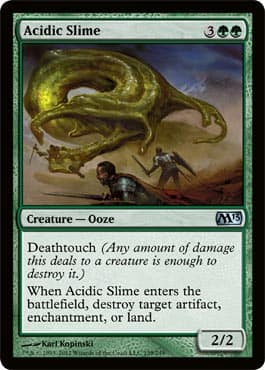All right, so now it’s time to begin talking about the actual model. If you need a reminder as to what we are trying to do, the first article in the series is here. While both sides (strategic and tactical) of the model are important, I think it’s wiser to start with the strategic once. Thus, we return to this circle:

Why do we start here? Because this is the best existing model for strategic-level thinking. I’ve already been over what the strengths and weaknesses of the model are, but to refresh your memory, I’ll summarize the major factors here.
The primary strength of the model is its ability to categorize strategic archetypes by their strategic goals. However, the model has two primary weaknesses. The first is that the lines between archetypes are consistently blurred, as individual draws can push you closer to a different archetype—at least in appearance. The second is that the model makes some strange classification pairings that can cause counterintuitive reactions (e.g. U/B Tendrils and Zoo both classifying as Aggro).
I am a firm believer in constantly questioning the way we think about things, and in doing so, I discovered that this model could be generalized and actually be made more accurate through so doing. It boils down to the following idea:
In Magic, from a strategic standpoint, you are invariably looking to control one of two resources: cards or time. Adrian’s circle reflects this but subdivides this into multiple archetypes, which causes lines to blur. Let’s talk about this idea in more detail, though, so you understand where I’m coming from.
Card Control
I believe the concept of control of cards is pretty obvious. So, what is the purpose of card control? The basic idea behind card control is that you exert your influence over the game via the effects of the cards you play. The principle is that the player who is able to affect the game more is the player who will end up winning. Thus, the goal is to have the largest cumulative effect on the game.
This is accomplished one of two ways: volume or economy. A simple analogy is this: Consider a game in which you have to play cards that total 20 to win. You could attempt to win by assembling a large string of small-value cards (such as 1s and 2s), or you could attempt to win by assembling a smaller number of large-value cards (such as 5s). Which strategy is superior depends on a number of factors, and both are valid.
This is similar to the way card control works in Magic. The key is the number of effects you are trying to generate. The focus of card economy is to have each card be extremely efficient and thus exert a large influence on the game. The focus of card volume is simply to play a lot of cards. Both work by establishing a large cumulative effect on the game through cards; they just go about it by different means. Jund is an example of card economy in action, whereas Dralnu du Louvre is an example of card volume.
In summary, the basic principle of card control is that if you generate a sufficiently greater number of effects (cast a sufficiently greater number of spells), the cumulative effect of that will be to bury your opponent under an avalanche of effects. This is card advantage and card control at its core. By providing a large volume of effects, effectively providing a large number of cards, you win the game because your opponent will lack the resources to defend in the long game.
Time Control
Last week, I wrote an article on time. In it, I explore the basic idea of how time interacts with Magic. I won’t reiterate that here. So, practically, how do we control time? Well, time control operates in one of two ways. First, you can attempt to control a critical resource (a resource that you need to continue playing Magic)—either life or cards in library. By attacking a critical resource, you control time because you force your opponent to respond to you; otherwise, he loses. The second method of controlling time is to control your opponent’s development. This can occur in a variety of ways, but it typically occurs by controlling board presence and/or land drops. Whenever a player is expending resources to ensure that nothing happens, he is controlling time. These aren’t the only ways of interacting with time, but they are the most common by far.
The key thing to remember is that at its core, time control is about controlling the number and effectiveness of your opponent’s turns in comparison to yours. The basic principle of time control is that if I take more turns than you or make better use of my turns, I will win because I will be able to accomplish more in the turns that I have taken. How does this concept relate to each of the two aspects of time control?
If I follow the Philosophy of Fire to pressure some critical resource you control in a proactive matter, I am attempting to make efficient use of my turns and force you to do the same. If you do not, I’ll win because my turns have been more effective than yours, and thus, I’ve generated more value from them. If I attempt to control your development, I am attempting to take a larger quantity of turns. In effect, I force you to waste turns by actively negating whatever you do on your turn or by gaining virtual extra turns by gaining effective extra turn-based effects such as land drops. Thus, I will win because I’ve taken more turns. Just as you can win with card quantity or card quality, you can also win with turn quality or turn quantity.
Variations in Control
The next logical question after we deal with what we are controlling is how we are controlling it. You might wonder why this is important, but if you think about how actual games of Magic play out, you’ll realize that the specific cards you play matter; thus, there has to be some strategic distinction that points to this. How we control any given resource relates to our specific methodology, which is exactly what we need.
First, there is an obvious division and one that is quite important: proactive versus reactive control. Consider that both Vapor Snag and Wrath of God have strong time control elements, but they fit in very different decks. This is because one is useful primarily for proactive control, whereas the other is useful primarily for reactive control. This doesn’t mean, however, that the two are mutually exclusive. Take Doom Blade for example. Doom Blade is as capable of proactive control as it is reactive control, which is one of the primary strengths of the card.
So, how do we determine whether we want to control things proactively or reactively? The answer is simple: “Who’s the Beatdown?” If you’re the beatdown, you want to be proactive. If you’re not, you want to be reactive. It’s literally that simple.
There is another aspect to control worth talking about, though, and that is what I am going to call the control vector. Whenever a deck seeks to generate an advantage in either time or cards, it needs to do so via a specific means. This means is the control vector. In Magic, it can be as general as controlling creatures or it can be as specific as a single card or mechanic (such as Survival of the Fittest or dredge).
Why is the specific control vector important? Well, it’s important because Magic is a game of interactions. Thus, not only do you have to identify what your opponent is trying to do, but how he is trying to do it. Included in this concept are the specific cards or mechanics he is exploiting to achieve his objective. The reason behind this is that often in Magic, you don’t fight your opponent’s strategy directly, but the cards he uses to implement them.
Revisiting Old Ideas
The next thing to do is to tie this new concept back to our existing ideas, seeing how they refine or recategorize our existing notions. Remember that this is what we were looking at before:

If you look at this circle and think about it, I believe you will start to see the connection.
- Aggro cedes all proactive control of cards in favor of complete control of time in one respect or another (generally attacking the critical resource of life, although there are rare exceptions).
- Control cedes all proactive control of time in favor of complete proactive control of cards.
- Midrange control and midrange beatdown in general favor control of cards over control of time, but they are often capable of executing proactive control of both.
- Hybrid control and aggro-control favor control of time (generally in both aspects) over control of cards, but they are able to proactively control both time and cards.
So overall, we can see that the new model covers much of the same ground as the old. That’s good, but in order for it to be an improvement, some new ground needs to be covered. What do we gain by thinking about strategic level control as simply over these two resources?
Simplified Long-Term View of Individual Draws
When looking at an opening hand or the opening couple turns of a draw, you aren’t limited by the strategic space of your deck. You can look at a draw and say, “This combination of cards is better suited to time control,” and thus play that way even if you are a midrange control deck. This aspect is primarily applicable to the archetypes in the middle (non-aggro, non-control).
As an example, consider that you are playing W/U Delver with Blade Splicer in Standard right now. What is the difference between the following hands?
Hand 1: Seachrome Coast, Island, Ponder, Vapor Snag, Delver of Secrets, Snapcaster Mage, Mana Leak
Hand 2: Seachrome Coast, Glacial Fortress, Island, Ponder, Snapcaster Mage, Restoration Angel, Blade Splicer
Hand 1 is much more suited to play time control than Hand 2, whereas Hand 2 is much more suited for card control. By understanding that your deck is capable of both, you can see the differences in the two draws and how they should be played.
Increased Resolution within Individual Archetypes
This one may require some explanation. The basic idea is that you can determine the degree to which your deck relies on card control or time control. This gives you a better idea of how far you can push in either direction. The more you rely on one aspect of control in design, the more you should rely on that aspect in play.
However, that is not the only way to increase resolution. The concept of resource control allows you to further refine your deck’s strategic positioning. Take, for example, Stax. Stax is a prison deck designed to lock the opponent out of the game with Mishra's Workshop by casting cards such as Trinisphere, Sphere of Resistance, and Lodestone Golem while using Wasteland, Strip Mine, and Crucible of Worlds to control the opponent’s land count. Is this deck midrange control or hybrid control? I would argue that it is hybrid control, but midrange is valid as well. Regardless, under the old system, you can compare it to Faeries (if you believe it is hybrid control) or Jund (if you believe it to be midrange control). You can immediately see that Stax is actually completely different than either deck.
Let’s look at all three decks.
Faeries is a deck designed for proactive control of both time and cards. Through Bitterblossom, Spellstutter Sprite, Sower of Temptation, and Cryptic Command, Faeries frequently achieves some degree of proactive card control. However, through Mistbind Clique, Spellstutter Sprite, and again, Cryptic Command, Faeries can often also achieve proactive time control via controlling its opponent’s development. Because Faeries also plays some reasonably cheap creatures (alongside Bitterblossom), the deck can also often apply life-total pressure reasonably quickly as well, which is another aspect of time control. Thus, the Faeries archetype is capable of executing both proactive time and card control depending on its draw and card composition, often leaving it in a strong position to pressure the opponent where he is weakest.
Jund is a deck designed primarily to focus on card control. Its cards are extremely efficient and powerful, so the deck is designed to win on the principle of card economy. It expects to gain advantage through the card efficiency of spells like Blightning, Bloodbraid Elf, and Broodmate Dragon. However, Jund is well capable of executing some time control as well. Jund’s strong removal suite (often featuring Maelstrom Pulse, Terminate, and Lightning Bolt) was a strong reactive time-control element that could also be applied offensively. Although Jund strongly favored card control overall, it is well capable of some degree of time control as well.
Stax, however, is a deck that is almost entirely focused on time control through development control. The deck’s primary focus is to deny the opponent’s ability to develop in any meaningful fashion, and it devotes almost all its resources to that function. Looking at card control, you see essentially none.
The concept of virtual card advantage (VCA) tries to deal with this with the basic principle that any card in your opponent’s hand that he isn’t going to be able to cast is effectively dead, but this idea doesn’t really communicate the fragility of the Stax deck’s position. A single Hurkyl's Recall or Rebuild, and the entire position is forfeit, giving up all the VCA gained. If you think of it as a control of time, however, you can understand the fragility of the position. Because you are all-in on this time control, losing it often means losing the game straight out.
This paints a very different picture for these decks. This tells you that Faeries and Jund, as decks, are far more flexible than Stax because they can control multiple resources. It also tells you that if you can break Stax’s control of your development, you have essentially won the game, as the deck has no other real control to fall back on.
The basic principle of this classification system is to allow you to understand how and when to attack opposing decks strategically. The idea is to use your own strengths (strong proactive control) to attack your opponent’s weaknesses (ideally places your opponent ignores, but often weaker proactive control) to attempt to overpower him in a localized area and limit his counter-play. The reason decks like Faeries are so effective is that their counter-play comes from the other side—fight Faeries in card control, and the deck can beat you with time control, or vice versa.
Knowing where and how your deck is designed to fight these resource battles is important. Take the archetype of control as an example. Control almost invariably cedes any form of proactive time control, only using reactive control of time to protect critical resources (generally life). This is why you see such strong reactive time-control elements show up in control all the time (e.g. Day of Judgment).
Normally, this would allow the opponent to counter by attempting to exploit his complete dominance over the development aspect of time control. But control gets around this by limiting the ways in which opposing decks can attack its development. If you look at control decks, they mostly develop by doing the following things (in order of importance):
- Making land drops
- Casting instants and sorceries
- Casting planeswalkers
- Casting creatures with enters-the-battlefield abilities
Note how all of these things are actually relatively difficult to attack profitably from a developmental standpoint. Let’s go through them in detail.
- Making land drops – Most decks today can’t really do much to stop you from making land drops. An Acidic Slime is an occasional nuisance here or there, but for the most part, land drops are almost invariably unmolested.
- Casting instants and sorceries – These are only vulnerable to countermagic. Instants and sorceries cannot be molested in any other way (in general). Specific cards (such as Day of Judgment) can be molested by abilities (such as undying), but that is a specific tactical interaction and not a strategic one. You can’t hamper your opponent’s ability to cast instants and sorceries unless you have countermagic. This connection, by the way, explains why blue-based aggro-control is traditionally so strong against control.
- Casting planeswalkers – Once again, you can harass planeswalkers in a variety of ways, but due to the fact that a planeswalker gets to use one ability immediately, the control player has often already achieved what he wanted. Take Liliana of the Veil as an example. Sure, you can kill her, but the control player already got an edict from her, which is what he wanted anyway. Thus, you haven’t really hurt his development by killing his Liliana. The planeswalkers that control players do tend to rely on for extended periods of time either are incredibly powerful if left unanswered (Jace, the Mind Sculptor) or have relatively high loyalty and/or can defend themselves well (Elspeth, Knight-Errant and Gideon Jura), thus making them hard to harass.
- Creatures with enters-the-battlefield abilities – Once again, control players play these cards for their enters-the-battlefield abilities. If a control player receives an enters-the-battlefield ability, he has largely obtained what he wanted out of the creature.
Thus, you can see how control takes what would be a natural weakness (complete lack of control over time in the sense of development) and covers it by making it difficult to harass its own development.
If you think about strategic-level interactions in this new way—as control over time and cards—you can often detect weaknesses in decks and perhaps find ways to exploit them. In general, every deck and every draw will have a vulnerability in its control over one or both aspects of time or over cards. It is your job as a player to attempt to exploit those vulnerabilities by exercising your own control over the corresponding resource. If you can’t, your fallback plan is to overpower the opponent in a different area with stronger proactive control. Fundamentally, this is how strategic-level interaction works in Magic.
Conclusion
So in summary, by thinking of strategic-level interaction as control over resources instead of pigeonholing decks into certain archetypes, we gain a cleaner, simpler understanding of how strategic archetypes operate. Not only do you gain increased resolution to think about the various aspects of each archetype, but you also gain the ability to analyze individual draws with respect to your overall strategy.
The ability to look at a draw as opposed to a deck is the most important aspect of this model. This is important because Magic is not a match between decks, but a match between draws from decks. Each draw has its own strengths and weaknesses, and being able to see those strengths and weaknesses is crucial to being able to play out the draw correctly to success (victory).
The other thing I like about this model is that it makes tying strategic-level thought to tactical-level thought much easier. Because on a tactical level Magic is about individual cards interacting, being able to speak about strategic-level interactions in terms of resources and not archetypes allows us to tie strategy to tactics via the effect of individual cards upon the resources in question. This provides a clear, simple connection between the two, allowing for a tighter, more effective model.
In general, I feel that this model for strategic-level interaction improves upon the existing model we had by refining the original model while making it simpler and easier to expand.
Chingsung Chang
Conelead most everywhere and on MTGO
Khan32k5 at gmail dot com













